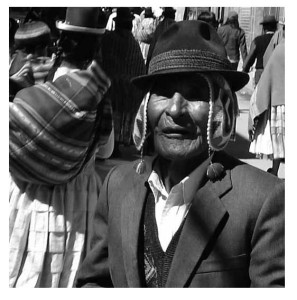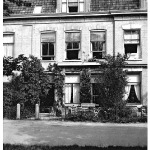Greens Release Plan for Solar Panels on Every Public Housing Home
www.lynnmaclaren.org.au. Jan. 29, 2013. The Greens have unveiled a $68 million plan to slash the power bills of some of the state’s poorest families and pensioners while cutting greenhouse gas emissions by 74,000 tonnes a year.
The plan would see 1.5kW solar systems installed on the roofs of every public and community housing dwelling across the state.
Housing spokesperson for the Greens Lynn MacLaren MLC said the initiative would help families and other public and community housing tenants by bringing down their cost of electricity by an average of $500 a year.
“At the same time it will assist in bringing down the state’s carbon emissions and boosting the solar energy industry in WA,” Ms MacLaren said.
“It is a win, win, win situation.
“With a relatively small government investment we could provide a boost to the budget bottom line of thousands of pensioners and families while at the same time reducing the state’s carbon emissions.
“We have around 22,000 public housing homes and apartments across WA and another nearly 8,000 community housing units. Their roofs could be used to assist householders in meeting rising utilities costs while at the same time reducing the state’s growing carbon footprint.
Read more: http://www.lynnmaclaren.org.au/greens-release-plan-solar-panels-every-public-housing-home
Jane Weru – Security of Tenure for The Urban Poor
A Critical Tool For Sustainable Social and Community Resilience
rockefellerfoundation.org. January 27, 2013.
In our new publication, titled Rebound: Building a More Resilient World, we asked leaders from various disciplines to share their lessons of what resilience means and what it requires of us. Through the lens of their own experiences, we can begin to explore some of the ways we can help prepare for, withstand and emerge stronger from the acute shocks and chronic stresses of the 21st century. Jane Weru, Executive Director of The Akiba Mashinani Trust explains how vulnerable communities could become resilient, citing the Mukuru people as a prime example.
Nairobi is a thriving metropolis that unfortunately suffers from high levels of inequality and violence. 65% of the city’s population of 4 million lives in the highly marginalized densely populated slums of the city, where residents face conditions of considerable insecurity and indignity characterized by single 10’ x 10’ shacks made of galvanized sheets, wood, polythene, wattle or mud with little access to clean water,sanitation, health care, schools and other essential public services. The poor who live in these fragile areas are at the mercy of environmental vagaries, especially flooding. Overcrowding raises the risk of respiratory illness. Contaminated water supply and unsanitary waste disposal causes gastro-intestinal problems, skin ailments, cholera, typhoid and other infectious diseases. Malnutrition is highly visible among children. At almost every turn, these factors thwart efforts by these communities to become resilient.
Read more: http://www.rockefellerfoundation.org/security-tenure-urban-poor
John Lee Anderson – Excerpt: Letter from Caracas – Slumlord
The New Yorker. Jan., 28, 2013. What has Hugo Chávez wrought in Venezuela? By Jon Lee Anderson.
LETTER FROM CARACAS about the Tower of David, which is the world’s tallest slum, and the man who runs it, Alexander (El Niño) Daza. Hugo Chávez has said that he wants to remake Venezuela into “a sea of happiness and of real social justice and peace.” His pronounced goal was to elevate the poor. In Caracas, the country’s capital, the results of his fitful campaign are plain to see. For decades, as one of the world’s most oil-rich nations, Venezuela had a growing middle class, with an impressively high standard of living. Hundreds of thousands of immigrants from the rest of Latin America and from Europe helped give Caracas a reputation as one of the region’s most attractive and modern cities.
Read more – Excerpt: http://www.newyorker.com/reporting/anderson#ixzz2JYDw9KXs
Over Break, Cornell Students Build Sustainable House In Nicaragua
www.sustainablecampus.cornell.edu – By Emma Jesch via the Cornell Daily Sun
Over winter break, Cornell students began building an affordable and environmentally sustainable model house in Nicaragua.
The students, who are part of Cornell University Sustainable Design — an organization that promotes sustainability through design — traveled to Nagarote, Nicaragua to build the house. The house will serve not only as a home for a family, but also as a platform to demonstrate ideal eco-friendly housing initiatives, said Kai Keane ’14, one of the students who led the project.
The house and its landscaping — part of the Sustainable Neighborhoods Nicaragua project — are the product of more than three semesters’ worth of research on designing sustainable and affordable housing for low-income Nicaraguan families, according to Keane. The house is scheduled to be completed around mid-February 2013, according to SNN’s press release.
The project team said it hopes the house can act as a precedent to ameliorate Nicaragua’s housing shortage.
“Nicaragua currently faces a severe housing shortage,” the team’s press release said. “Two out of every three Nicaraguans confront difficulties related to housing.”
As the project team looks to the future, it hopes to eventually broaden the scope of its work, according to Keane.
“We hope that this project can extend much farther than just this one house,” Keane said. “It can be replicated all over and eventually [can be] nationally implemented.”
Read more: Over Break Ccornell Students Build Sustainable House In Nicaragua
Planning, Connecting, and Financing Cities Now
January 24, 2013. Worldbank Publications.
This report provides Mayors and other policymakers with a policy framework and diagnostic tools to anticipate and implement strategies that can avoid their cities from locking into irreversible physical and social structures.
Full text: http://issuu.com/world.bank.publications/docs/9780821398395
Van yatiri tot privékliniek – Interculturaliteit in de gezondheidszorg in Bolivia – deel 1
Toegang tot goede gezondheidszorg is een belangrijke basisbehoefte. Maar wat is goede gezondheidszorg? Als wij in Nederland ziek worden, hebben we er in de meeste gevallen wel vertrouwen in dat onze huisarts of een specialist in het ziekenhuis ons weer geneest. We begrijpen min of meer hoe het zorgsysteem in elkaar steekt, en hoeven ons over de kosten van de behandeling nauwelijks zorgen te maken omdat we verzekerd zijn. Als we in het buitenland zijn, wordt de situatie al lastiger. De arts spreekt onze taal niet en we weten niet hoe het systeem werkt. Hetzelfde geldt natuurlijk voor immigranten in Nederland die het Nederlands nog niet goed beheersen.
Dit soort problemen speelt ook in andere landen met een cultureel diverse bevolking. Voor de inheemse inwoners van ontwikkelingslanden kan het Westerse zorgsysteem vreemd, onbegrijpelijk en angstaanjagend overkomen. In veel gevallen vertrouwen zij liever op hun eigen inheemse geneeskunde, vaak uitgevoerd door medicijnmannen en -vrouwen. Read more



